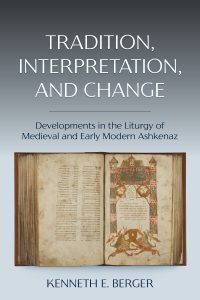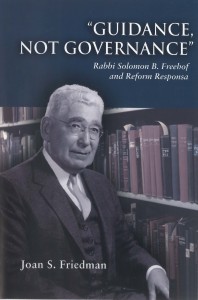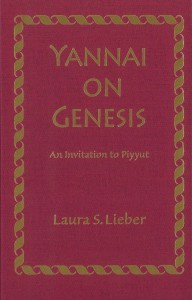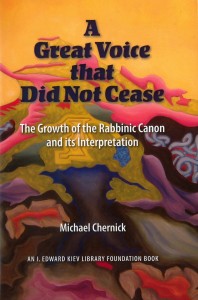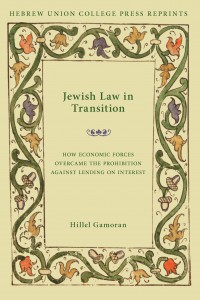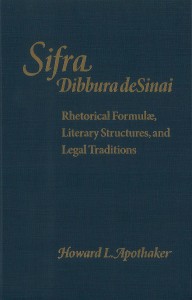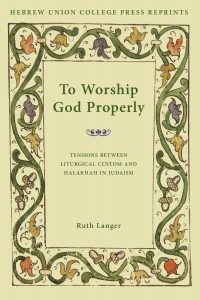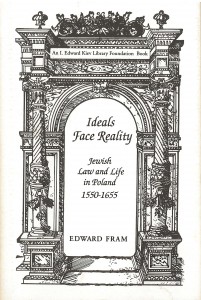Tradition, Interpretation, and Change:
DEVELOPMENTS in the Liturgy of Medieval and Early Modern Ashkenaz
KENNETH E. BERGER
In Tradition, Interpretation, and Change, Berger draws upon a wide body of primary sources, including classical rabbinic and geonic works, liturgical documents found in the Cairo genizah, medieval codes, responsa, and siddur commentaries, minhag books, medieval siddur manuscripts, and early printed siddurim, as well as a wealth of secondary sources, to provide the reader with an in-depth account of the history and history of interpretation of many familiar and not-so-familiar prayers and liturgical practices.
Guidance, Not Governance: Rabbi Solomon B. Freehof and Reform Responsa
Joan S. Friedman
Solomon B. Freehof (1892-1990) called for Reform Judaism to turn to halakhah, not in order to adhere to codified law, but to offer “guidance, not governance” through the writing of responsa. Friedman analyzes Freehof’s responsa on a select number of crucial issues that illustrate the evolution of American Reform Judaism and discusses the deeper issues with which the movement struggled, and continues to struggle, in its attempt to meet the ever-changing challenges of the present while preserving both individual autonomy and faithfulness to the Jewish tradition.
Yannai on Genesis: An Invitation to Piyyut
Laura S. Lieber
Piyyut is the art of Hebrew or Aramaic poetry composed either in place of or as adornments to Jewish statutory prayers. Laura S. Lieber uses the piyyutim of a single poet, Yannai (ca. sixth century C.E.), to introduce readers to this important but largely unfamiliar body of writings. Her groundbreaking study is an invitation to those with interests in areas such as liturgical studies, rabbinic literature and targum studies, the early synagogue and its art, Byzantine Christian culture and society, and the history of biblical interpretation to engage with these beautiful and neglected texts and include them in larger intellectual conversations.
A Great Voice that Did Not Cease: The Growth of the Rabbinic Canon and its Interpretation
Michael Chernick
The growth of the rabbinic canon may be best described as a hermeneutical endeavor. Michael Chernick demonstrates how hermeneutical methods helped the Rabbis confront the difficulties that arose when logical and interpretative problems appeared in scriptural and, later, rabbinic texts. Given the Rabbis’ theological, literary, and rhetorical attitudes, these reading strategies were adopted to obviate the problem the texts presented. His study draws its title from the traditional view of Sinaitic revelation, when God spoke to the assembled people with “a great voice that did not cease” (kol gadol velo yasaf, Deut 5:19).
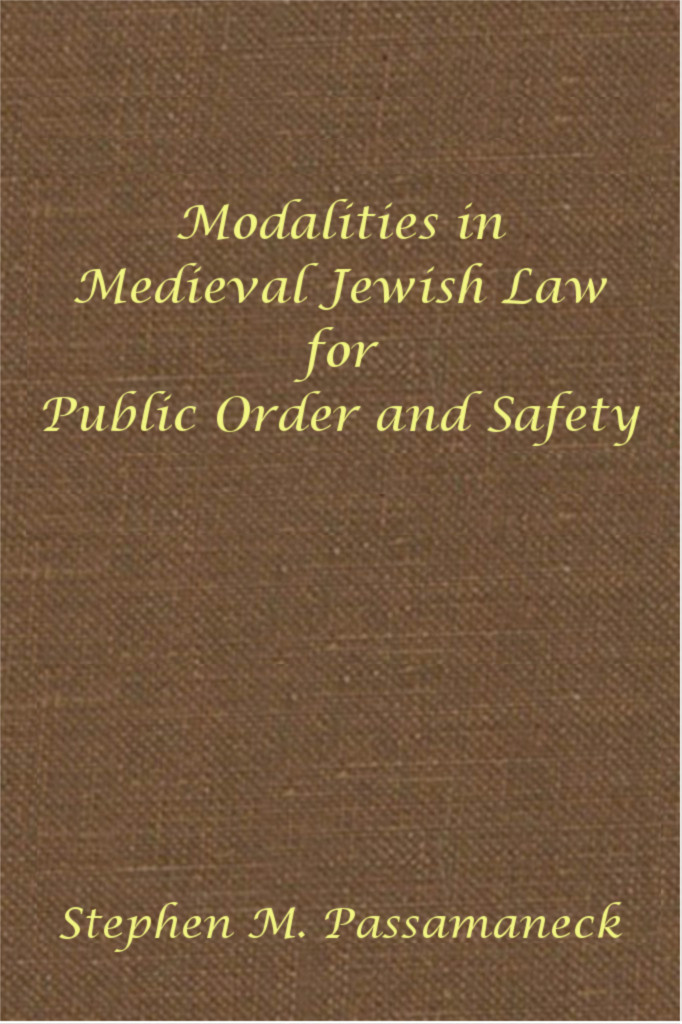 Modalities in Medieval Jewish Law for Public Order and Safety
Modalities in Medieval Jewish Law for Public Order and Safety
Stephen M. Passamaneck
Modalities in Medieval Jewish Law includes chapters on punitive modalities, preventive and coercive modalities, and protective modalities, as well as appendixes on “A Plea for Calm,” “The Arresting Officer,” and “Human Rights and Kavod Habriut” and a comprehensive bibliography. Passamaneck’s discussion exposes some of the less exalted or inspiring episodes of medieval Jewish history.
Jewish Law in Transition: How Economic Forces Overcame the Prohibition against Lending on Interest
Hillel Gamoran
The prohibition against lending on interest (Exodus 22:24) was intended to prevent the wealthy from exploiting the unfortunate. In the course of time, it was seen to have consequences that militated against the economic welfare of Jewish society as a whole. As a result, Jewish law (halakhah) has over the centuries relaxed the biblical injunction, allowing interest charges despite the biblical prohibition. Hillel Gamoran seeks to explain how rabbis, from the Tannaim until the present day, have struggled with the law and with one another and used inventive interpretation to create the legal fictions necessary for business life to flourish.
Sifra, Dibbura de-Sinai: Rhetorical Formulae, Literary Structures, and Legal Traditions
Howard L. Apothaker
Howard Apothaker’s analysis of the exegetical and rhetorical characteristics of Sifra builds on his translation of and commentary on the section of Dibbura deSinai which covers Leviticus 25–27. Analysis of Sifra’s highly formalized rhetoric yields insight concerning the general purpose(s) for which the framers created the work, showing that the framers of Sifra sought as their main objective to validate the essentiality, or non-superfluity, of every word of Scripture.
To Worship God Properly: Tensions Between Liturgical Custom and Halakhah in Judaism
Ruth Langer
A major influence on the development of rabbinic liturgical custom after the destruction of the Temple was the need to establish that this innovative worship of the heart was as acceptable to God as biblically prescribed sacrificial worship. Later Jewish communities and their leaders continually refined the details of the system they inherited to reflect their changing understandings of acceptable, meaningful, and constructive worship. Ruth Langer uses the tools of historical scholarship and anthropological study of ritual to analyze some of the dynamics that have shaped Jewish liturgical law and determined the broader outlines of the prayer life of the Jews.
Ideals Face Reality: Jewish Law and Life in Poland, 1550-1655
Edward Fram
Jewish life in early modern Poland was characterized by an adherence to Jewish law (halakhah) that Polish Jewry had inherited from medieval Franco-German Jewry, and almost all aspects of Jewish activity fell within its purview. Jewish law remained constant throughout the ages in some areas, but in others rabbis were forced to reinterpret it in light of the complexities of contemporary life. Edward Fram shows how the Polish community, at times consciously and at times unconsciously, transformed some of its traditional values until they may have been unrecognizable to Jews from an earlier age.
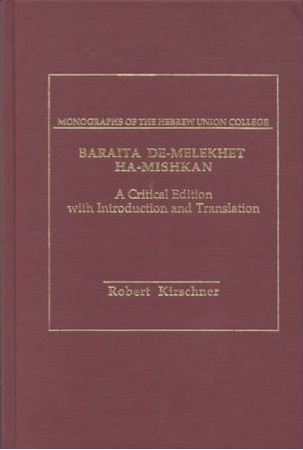
Baraita De-Melekhet Ha-Mishkan: A Critical Edition with Introduction and Translation
Robert Kirschner
Tannaitic, amoraic, and geonic literature, on the other hand, provides scattered remarks on and explanations of biblical passages relating to the Tabernacle but no sustained exegesis of the tabernacle description. Baraita de-Melekhet ha-Mishkan presents the only systematic rabbinic exegesis of the tabernacle account to come from late antiquity or the Middle Ages. Kirschner offers a critical edition with introduction, English translation, transcriptions, plates, appendices, bibliography, and index.
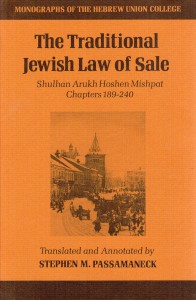 The Traditional Jewish Law of Sale: Shulhan Arukh Hoshen Mishpat, Chapters 189–240
The Traditional Jewish Law of Sale: Shulhan Arukh Hoshen Mishpat, Chapters 189–240
Translated and annotated by Stephen M. Passamaneck
One area of traditional Jewish law was the laws of buying and selling and the laws of fraud in sales. This particular domain within traditional Jewish commercial law is surprisingly intelligible and fascinating for modern students of Jewish tradition. Buying and selling are just as much a part of the modern world as they were of past ages. Moreover, the student of legal history or comparative law will find that this rabbinical code on sales and fraud in sales provides, at a glance, a view of the strata of Jewish legal development from the ancient period to the sixteenth century.
 An Analysis of Vatican 30
An Analysis of Vatican 30
Lewis M. Barth
Lewis M. Barth offers a thorough treatment of this 13th century manuscript of Bereshit Rabbah, which is important not only for the history of midrashic traditions but also linguistically, given its closeness to the Aramaic of the Talmud Yerushalmi. He describes the manuscript, discusses its scribes, its relationship to other early witnesses, and offers sample chapters illustrating the work of four scribes.

